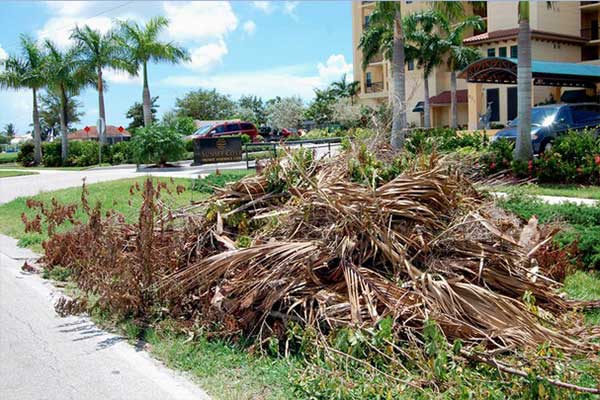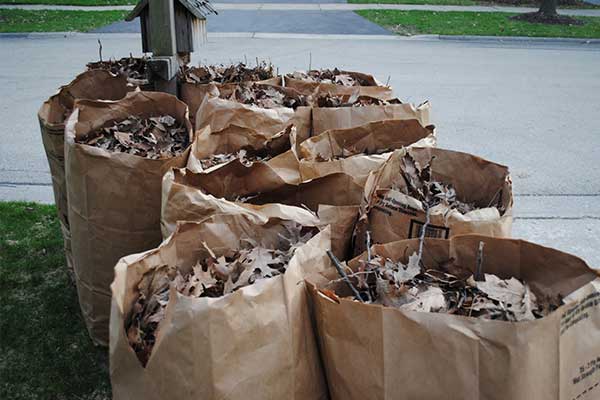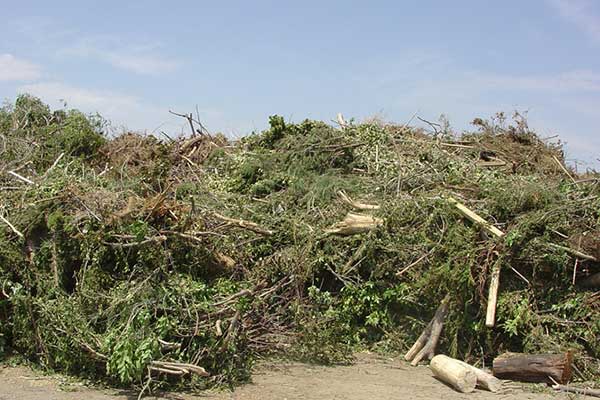In China’s landscaping waste resource reuse industry is still in the early stages of development, and the total amount of landscaping waste is constantly increasing. The development and utilization of landscaping waste is of great significance for improving the urban and rural ecological environment, building a harmonious city, increasing employment, and promoting economic development. Ecological, social and economic benefits.
Landscaping waste refers to dead branches, fallen leaves, grass cuttings, flower sap, pruning of trees and shrubs, and other plant debris caused by natural littering or artificial pruning of garden plants. It is also called garden waste or green waste. With the rapid development of urban greening, the total amount of garden greening waste has also increased year by year. In some large cities, garden greening waste has been separated from urban waste, and is centrally absorbed and treated by the gardening and greening department. More methods are reused to form a new class of organic matter.
At present, most cities mainly adopt two methods to deal with urban landscaping waste, that is, most of them are transported to landfills in the suburbs, and a small part is incinerated with domestic garbage. These two methods are not in line with environmental protection requirements and waste money. Therefore, it is of great significance to seek the harmless treatment and resource utilization of garden greening waste, and to solve the problem that the garden greening cultivation substrate relies heavily on peat resources, which saves natural resources, prevents environmental pollution, and realizes a virtuous cycle of ecological economy.
Status of Landscaping Waste Treatment
Because of the many advantages of recycling landscaping waste, countries and local governments around the world have formulated corresponding laws and regulations prohibiting landfilling and incineration of landscaping waste. In addition, according to the overall situation of the country and the city, a series of effective waste collection plans have been formulated to promote the smooth implementation of garden waste resource reduction by reducing costs. Some developed countries have begun to reuse and treat green waste earlier, using modern processing technology systems and supporting equipment, with high scale and industrialization, strong publicity, and wide public awareness. In order to improve the reuse rate of garden waste, some developed countries in the world have invested a lot in technology, policies and aspects. The survey shows that the current scientific treatment mode of garden greening waste is composting, and its technology has matured abroad.
Compared with foreign countries, there are still some gaps in the reuse of garden greening waste in China, and the start is relatively late. The Ministry of Construction pointed out in the opinion on the construction of conservation-oriented urban landscaping that it encourages the development of biomass renewable fuels, organic nutrient substrates, and deep processing through the use of compost technology to treat landscaping waste such as pruning branches, reduce the landfill storage capacity, and Recycling.
Some of these economically developed cities have also launched garden waste recycling projects. Government departments have directly invested in the establishment of a certain scale of garden waste treatment centers to meet the increasing needs of urban garden waste.
Ecological treatment technology of landscaping waste

1. Make feed
Green plants in landscaping waste, such as weeds left after lawn mowing, can be collected, transported, treated, and dried uniformly, and finally made into green hay or processed into feed. The silage is made by using a special cellar to tightly seal the prepared feed, and then fermented with lactic acid bacteria. The feed made by the silage can be stored for a long time and the nutrients are not easy to lose. It is one of the favorite tastes of animals, but as an animal word Because it contains tannins in plant leaves, animals often refuse to eat the feed, and its protein and vitamin content are low, so it has poor availability and cannot be used as a main feed for animals. To eat, only pair it with other feeds.
2. Power generation
Waste-to-energy technology refers to the use of heat generated by the burning or stacking of waste as a kinetic energy to generate electricity. The stacking and burning of landscaping waste can generate a lot of heat that can be used to generate electricity. In the future, with the continuous optimization and popularization of waste-to-energy technology, the skills of using garden green waste development will inevitably be widely used. With the increasing power consumption in China, the demand for biofuels will inevitably increase. In order to better meet this demand, the recycling and utilization of landscaping waste will definitely become more popular and eventually form A relatively complete industry chain.
3. Preparation of biogas
The gas that organic matter undergoes fermentation of various microorganisms in the absence of oxygen to form a mixture is called biogas. The formation of biogas is in an environment without oxygen and sunlight, and it requires a large amount of carbon and nitrogen. Landscaping waste contains a large amount of carbon, so it can be used as a raw material for biogas production. Can provide the necessary microorganisms for biogas production. After the anaerobic fermentation of the biogas digester, the mixed gas can be removed from the system. It is used as a biofuel to generate electricity, which is of great significance to the progress of urban garden construction and resource reuse. Biogas-fermented clinker is usually a liquid. It can be used as a fertilizer to improve sudden fertility. It belongs to a good soil improver.
4. Manufactured into boards and wood chips
The main parts of gardening waste are classified, and they can be divided separately according to the different tree species. The trimmed branches and trunks are transported to the destination, and the thick branches are directly made into boards. After a series of processing, Made into sheet. However, because the smashed particles of landscaping waste are loose, the bearing capacity of the board is relatively weak, and the pressure resistance is not strong, so the scope of its use is more obvious. The remaining branches that cannot be made into boards can be used as raw materials for papermaking.

Ways to reuse landscaping waste
In the process of reusing landscaping waste, pay attention to the nature of the waste, and then apply their properties to practice. The effective ways are: one is organic fertilizer, the other is biomass energy or other types of organic products.
1. Become organic fertilizer
The so-called organic fertilizer is not the so-called organic fertilizer that puts fallen leaves in the soil to make it rot into fertilizer. Organic fertilizer refers to the formation of organic fertilizer only after putting the greenery waste of the garden under certain conditions and subjecting it to fermentation by microorganisms, and a series of processes that completely rot and even deodorize it. Organic fertilizer has the advantages of harmlessness, reduction, and resource conservation. It can play a significant role in soil protection of green space, conservation or cultivation of plants in garden construction, and roof greening.
2. Become an organic cover
Organic mulch is generally used to protect the surface of the soil and to improve the coverage of the ground. It uses waste green plants such as wood chips and bark. During the production process, it is crushed first, and then it is covered on the garden green space, the surface of the flower pot and other places. This advantage is that it can effectively save irrigation water, reduce the growth and spread of weeds, and reduce evaporation caused by sun exposure, so that the soil can maintain a certain temperature and increase soil aeration. Although another inorganic cover is relatively low in cost and can be stored for a long time without decay, it has poor air permeability and is generally covered with stones. Therefore, organic mulch has the advantages of effectively preventing soil erosion, improving soil fertility, and promoting the rapid growth of plants.

3. Become biomass energy
In recent years, the demand for new energy has increased, and as an emerging clean energy biomass energy, people have paid more and more attention to it. Facing the declining storage of oil and coal, it is necessary to find solutions to global problems such as air pollution and global warming. Therefore, in view of the hundreds of millions of tons of waste left in China’s landscaping and agriculture each year, the development of biomass energy has great potential.
Concluding remarks
Through the related research on the problem of landscaping waste treatment, we can find that under the current conditions, the design of this work is multi-faceted. The relevant personnel should start from the objective reality of landscaping and make full use of the advantageous conditions to study and formulate The most practical implementation method of waste disposal.


